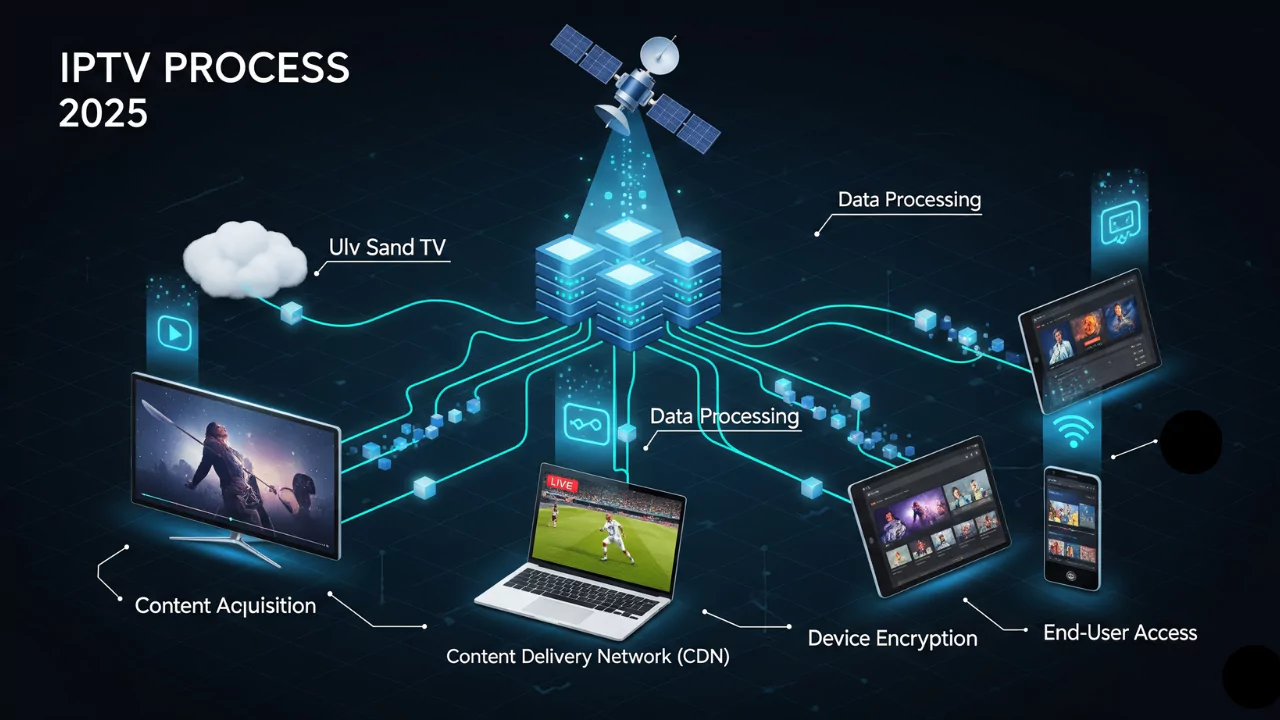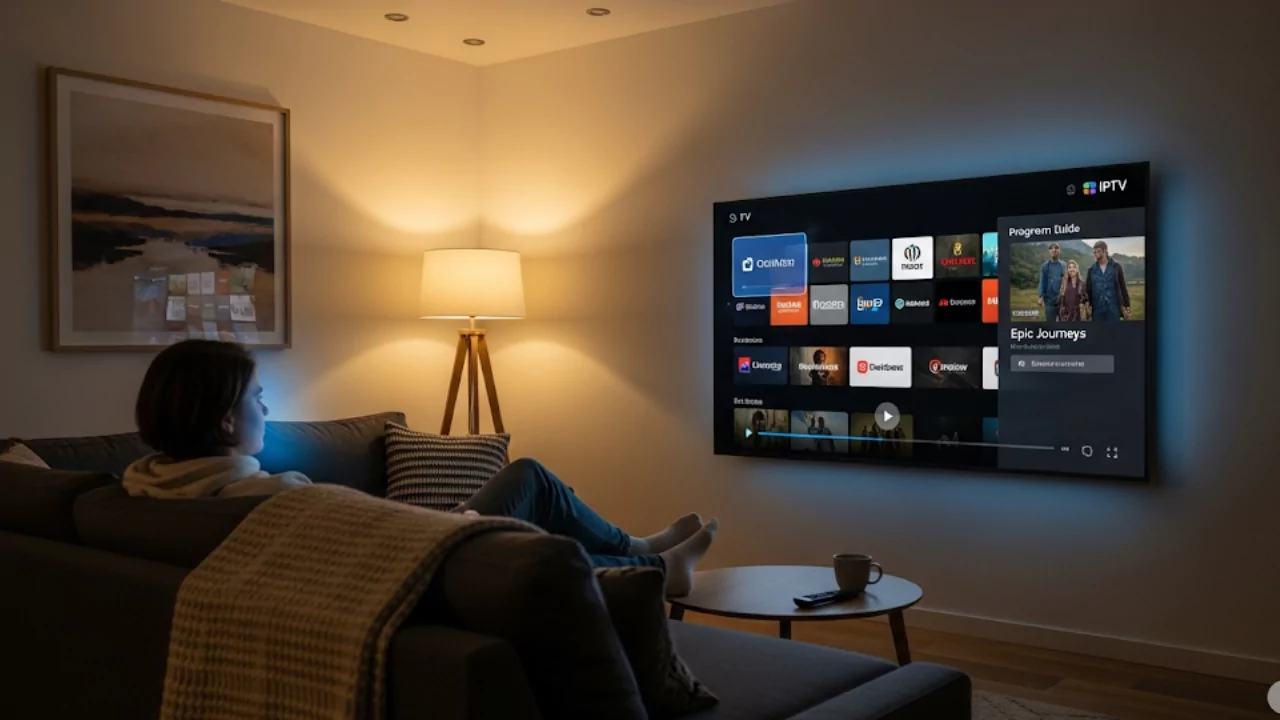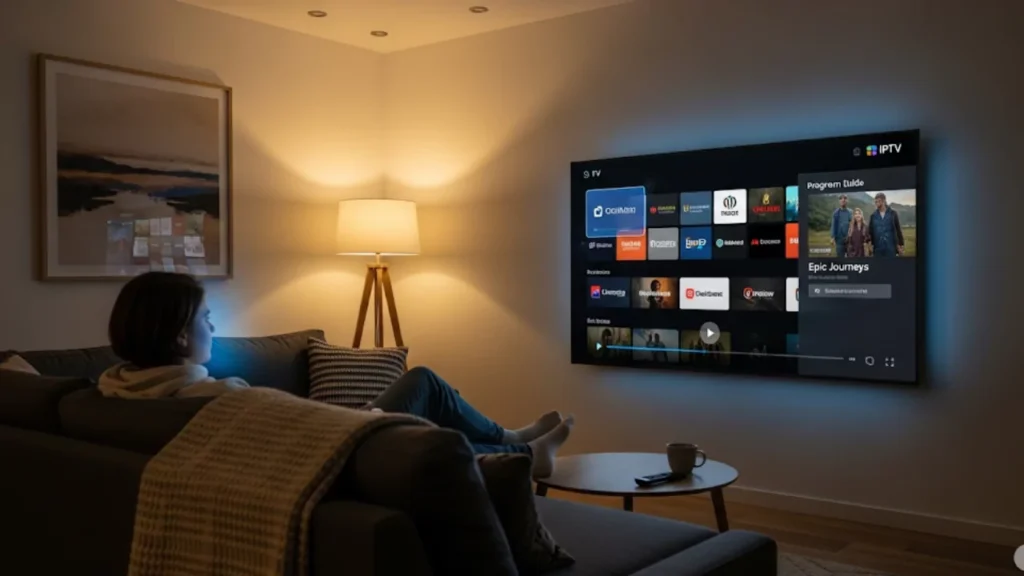Ready to ditch cable TV forever? IPTV, or Internet Protocol Television, is changing how we watch live TV and on-demand shows. Everything you need to know about IPTV services is covered in this guide. It includes smart TVs and streaming devices. Use it to make the right switch.
IPTV (Internet Protocol Television) allows you to stream live TV, on-demand shows, and catch-up content. You can use smart TVs or streaming devices for this. This 2025 guide shows how IPTV works. It compares IPTV to cable and helps you choose a legal, high-quality IPTV service in your area.
The Evolution of IPTV
From Traditional Cable to IPTV
The shift from cable TV to IPTV represents a significant change in how content is delivered. IPTV is different from traditional TV. It uses the internet instead of physical cables and fixed schedules. This gives viewers more flexibility and convenience. YouTube TV shows this change well. It gives users live channels, on-demand videos, and catch-up TV. People can watch from anywhere with a good internet connection.
Key Milestones in IPTV Development
Several breakthrough moments shaped today’s IPTV landscape:
- 2005-2010: Early IPTV service providers emerged, focusing primarily on live TV streaming.
- 2011-2015: Integration with smart TVs and set-top box devices expanded accessibility.
- 2016-2020: Adoption of 4K content and advanced streaming quality enhancements
- 2021-2025: AI-powered content recommendations and 5G network optimization
The Protecting Lawful Streaming Act and the Digital Economy Act of 2017 made key rules. They help distinguish legal IPTV services from illegal ones. They also protect streaming rights.
What Are IPTV’s Core Features?
Live TV Streaming
Live TV functionality remains the cornerstone of any quality IPTV service. CDNs help stream live content smoothly on various devices. You can enjoy live streaming on Android TV boxes, MAG 324, or Formuler Z8 devices. It uses adaptive bitrate streaming technology to keep quality steady.
IPTV service providers manage bandwidth during busy times. They use multicast and unicast formats to do this. This method stops network congestion. It also keeps streaming quality high for users watching live TV channels at the same time.
Video on Demand (VOD)
On-demand content libraries distinguish premium IPTV services from basic streaming platforms. Advanced content storage systems offer instant access to thousands of on-demand titles. They feature intuitive Electronic Program Guides and interfaces that are easy to use.
Many IPTV services, like IPTV Smarters and Flicknex IPTV, use strong content management systems. These platforms enable seamless browsing, personalized recommendations, and efficient content licensing integration.
Time-Shifted Media
Time-shifted TV and catch-up TV services offer great viewing flexibility. Users can pause live shows, rewind missed parts, or set recordings for later. These features change how we watch TV. They assist you in adapting your schedule to a hectic life. Time-shifted TV lets you watch important shows anytime. You can enjoy them at a community center or while streaming at home.
How Does IPTV Technology Work?

Content Acquisition and Licensing
Tough content licensing agreements must be managed by IPTV service providers. These agreements allow them to legally offer programming to their subscribers. They talk with networks, studios, and distributors to secure streaming rights. This way, they stay in line with copyright laws and regulations. Legitimate providers spend a lot on proper licensing. This sets them apart from unauthorized services that skip these legal steps. This investment protects both providers and subscribers from potential legal complications.
Encoding and Compression Techniques
Modern IPTV relies on sophisticated encoding processes to deliver high-quality video content efficiently:
- Raw content capture: Original programming is digitized into digital data packets.
- Compression optimization: Advanced algorithms reduce file sizes while maintaining streaming quality
The MPEG-DASH protocol and HTTP standards help different streaming devices work together. This covers gadgets like high-end Android TV systems and the Amazon Fire Stick.
Role of Content Delivery Networks (CDNs)
Content delivery networks form the backbone of reliable IPTV services. Distributed systems cache popular content on several servers. This improves user experience and reduces latency. The nearest server receives requests from CDNs. This way, they ensure the best streaming performance no matter where you are.
Streaming servers are used by CDNs to control traffic spikes during major events. This helps avoid service interruptions that often affect lesser IPTV providers.
Playback on Diverse Devices
Modern IPTV subscription services support extensive device compatibility:
- Smart TVs: Direct integration with Samsung, LG, and Sony television systems
- Streaming devices: Apple TV, Android TV boxes, Dreamlink T1, Dreamlink T2, and MAG 322 units
- Mobile platforms: iOS and Android applications for portable viewing
- Gaming consoles: PlayStation and Xbox integration for entertainment centers
This flexibility allows users to have a steady viewing experience on all their preferred streaming devices.
Benefits of IPTV
Personalized Viewing Experience
IPTV services use AI to suggest content just for you. They track your viewing habits. This helps them make custom channel lists and personalized Electronic Program Guides. Advanced user interfaces change based on your likes. They show commonly used content and organize less popular options neatly. This setup makes navigation easier than with traditional programming guides.
Flexibility Across Devices
A key advantage of IPTV subscription services is device flexibility. Users can watch on their smart TV at home. Then, they can continue on mobile devices during commutes. This makes TV a portable entertainment experience. Webnexs IPTV software lets you sync your progress, preferences, and recordings across devices. So, you can access everything easily.
Enhanced User Interactivity
Modern IPTV services are unique. They provide interactive features that regular TV doesn’t offer. Users can find more program details, join live polls, or check related content. They can do this without stopping their viewing experience. These features create entertainment that is more engaging. They also respond to viewer preferences right away.
How Is IPTV Integrating With Technology?
Impact of 5G on IPTV Performance
5G networks change IPTV streaming. They allow smooth 4K streaming and boost virtual reality. Plus, they enhance interactive features with ultra-low latency connections. With its higher bandwidth, mobile IPTV users can stream quality content without Wi-Fi. Plus, improved network stability means less buffering. IPTV is becoming a reliable choice over traditional broadcasting. This is true even in places where internet has been unreliable.
Use of AI in Content Recommendations
AI is changing IPTV services. It offers precise, personalized content recommendations. These recommendations come from machine-learning algorithms. They examine demographic information, viewing trends, and preferences. These systems get better as users engage with them. AI market analysis helps providers:
- Optimize content libraries.
- Invest in programs that appeal to subscribers.
- Spot new entertainment trends.
Adoption of Immersive Formats (4K and VR)
Premium IPTV services are quickly using immersive content formats. This helps them stand out from basic streaming platforms. 4K video offers amazing visual clarity. At the same time, virtual reality creates new ways to enjoy entertainment. These technological advances require robust content delivery networks and advanced streaming protocols.
Users with top streaming devices, like the Apple TV 4K or premium Android TV, can enjoy huge 4K libraries. Leading IPTV service providers offer this.
Legal Considerations in IPTV Usage
Differentiating Legitimate vs. Unauthorized Services
To find trusted IPTV providers, check for these key points:
- Proper licenses
- Clear subscription terms
- Reliable customer support
- Money-back guarantees
- Compliance with broadcasting rules
Authorized services provide smooth and secure streaming. In contrast, unauthorized providers often lack licenses. They offer low prices but face many disruptions. These services can bring legal risks. They might also expose you to malware from unsafe software.
The Role of VPNs in Privacy and Access
VPNs are great for IPTV. They protect your privacy and stop your ISP from throttling you. Your streaming traffic is encrypted by VPNs.. This stops providers from watching what you watch or slowing down your speeds. Using VPNs to get around geo-restrictions can break IPTV service rules and content licenses. So, users should check their subscription terms closely before proceeding.
Challenges Facing IPTV
Concerns Over Piracy and Content Protection
- Content piracy is a major challenge for legitimate IPTV service providers.
- Unauthorized services bypass proper content licensing, creating unfair competition.
- Users of unauthorized services face potential legal risks.
- The industry is developing advanced content protection technologies to combat piracy networks.
- Regulations like the Digital Economy Act 2017 enhance enforcement against piracy operations.
- Legal frameworks protect both content creators and streaming platforms from unauthorized competition.
Issues with Network Stability and Latency
- Network infrastructure limitations can affect IPTV streaming quality, especially during peak usage times.
- Internet service providers might use throttling. This means they prioritize certain types of traffic over streaming services.
- Throttling can lead to buffering issues and reduced streaming quality during high-demand periods.
- Advanced streaming protocols and adaptive bitrate streaming help address these issues.
- Significant network infrastructure upgrades are still needed for consistent IPTV performance worldwide.
What Does IPTV’s Future Hold?
Trends Shaping the IPTV Landscape
Digital transformation continues driving IPTV adoption as traditional broadcasting methods become increasingly obsolete. USA IPTV providers are growing their service areas. At the same time, international providers are improving access to content across borders. Cloud-based infrastructure improvements enable smaller providers to compete effectively with established streaming platforms.
Integration with smart home systems is a new trend. It enables voice control over content. Plus, it offers viewing suggestions based on your schedule and preferences.
Potential Developments in IPTV Technology
Future IPTV innovations will boost interactivity. This change will help users find content more easily. It will also allow smooth use across different devices. Blockchain can change how we license and pay for content. At the same time, advanced AI will tailor content to match viewers’ moods and preferences. Better streaming protocols could support 8K video and advanced virtual reality. This will make watching TV more immersive.
Final Thoughts
IPTV is revolutionizing television entertainment with unmatched flexibility, personalization, and access to content. YouTube TV and IPTV providers offer better viewing than traditional cable. But it’s important to pick legitimate services that have the right licenses and support. Avoid suspiciously cheap options that could compromise your experience or legal standing. Examine your devices, viewing preferences, and content requirements. This aids in your selection of the ideal IPTV plan. Enjoy reliable, high-quality streaming for years on all your favorite devices.
FAQs
- Is IPTV legal in the USA?
The legality of IPTV depends on where the service comes from. Licensed providers are legal, but pirated streams are not.
- Is IPTV free or paid?
Some IPTV services are free. However, premium plans give you better quality, reliability, and more channel options.
- What is IPTV and how do I get it?
IPTV is television delivered over the internet. You can access it through apps, smart TVs, or streaming devices.
- Is IPTV worth paying for?
Paid IPTV offers stable service, HD channels, and less buffering, making it a good value for many users.
- What channels do you get with IPTV?
IPTV can give you live TV, sports, movies, international channels, and on-demand content. This varies by provider.


